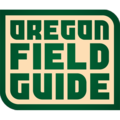Days
<1
Motors Allowed?
Yes
Difficulty
Difficult / Class C
Please respect the outdoors by practicing Leave No Trace. Learn more about how to apply the principles of Leave No Trace on your next outdoor adventure here.
As a UNESCO biosphere reserve, Cascade Head is one of Oregon's most iconic headlands. However, most people are surprised to learn that below the weight of this massive basalt outcropping sits Oregon's longest sea cave. Unlike the majority of visitors who explore Cascade Head by trail, the arches and sea caves beneath the head are accessible only by sea kayak.
Departing from Knight Park on the north bank of the Salmon River, it is a roughly 1.1-mile paddle to the often choppy mouth of the river. From there it is only an additional 0.4 miles to the Cascade Head Sea Cave. Two Arches and countless other smaller stacks lie en route to Harts Cove, an additional 2.1 miles to the north, where Chitwood Creek plummets roughly 50 feet into the Pacific Ocean.
Cascade Head is part of the Cascade Head Marine Reserve and Marine Protected Areas. This means that there are specific prohibitions against fishing and the harvesting of fish, invertebrates, and seaweed. Check here for specific clarifications on regulations, exemptions, and a detailed representation of the area's boundaries.
Be sure to visit as the tide is going out. Do NOT enter cave during incoming tide! Outgoing tide will make passing the Salmon River bar much less tumultuous, and it will make entering the caves much safer. Check local tide tables before departure.







Oregon Field Guide is OPB's long-running local weekly TV series. The program covers natural resources, ecological issues, outdoor recreation and travel destinations across the Northwest region. This award-winning show is one of the most-watched local productions in the public broadcasting system.
Oregon Field Guide also extends the work it does in the field for the television series across radio and the Web, providing a greater degree of coverage.
Oregon Field Guide airs Thursday evenings at 8:30 p.m. and repeats Sundays at 1:30 a.m. and 6:30 p.m. In the Mountain Time zone of Eastern Oregon, the program airs at 9:30 p.m. Thursdays, and at 7:30 p.m. Sundays.

Comments
Also, I can't see why a rising tide should be a problem in the Cascade Head cave given its very high ceiling and lack of current. There is a rock just before the entrance that can cause trouble at low tides with normal or above summer surf. The inside is much wider than the entrance, so surf in the cave is not a problem and there is a beach in the back with some rocks just short of that beach. I hope out here in low tides and walk the boat to this beach. Bill
Sign In and share them.